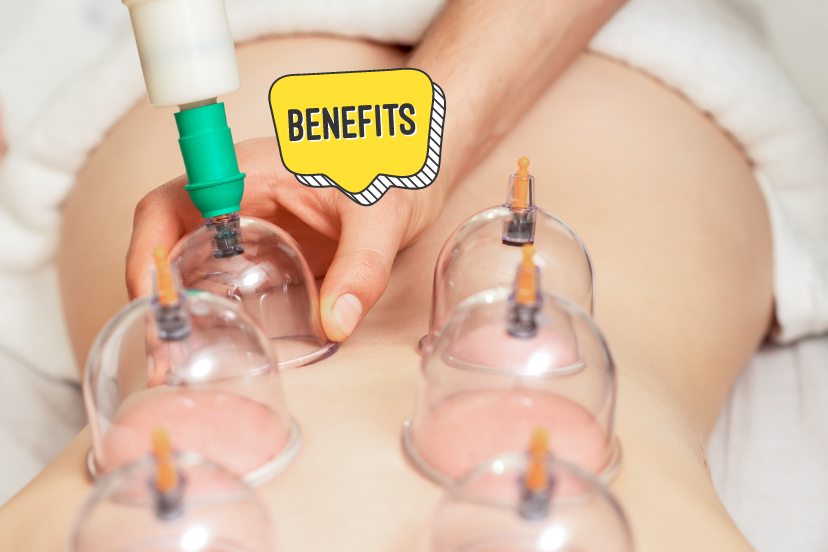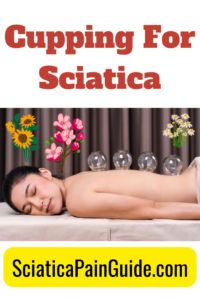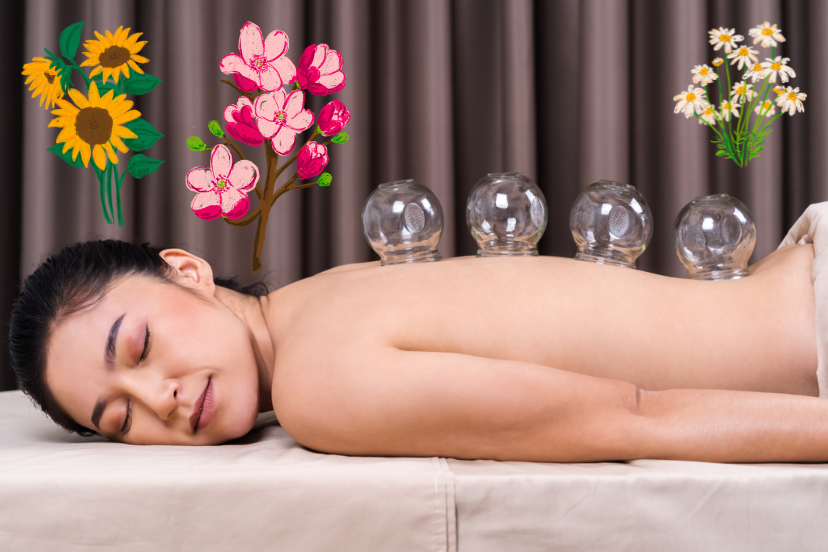Cupping For Sciatica
Discover the benefits of cupping for sciatica relief. Uncover expert tips and treatment options. Get the relief you’ve been seeking today! Learn how this ancient therapy boosts blood flow and reduces muscle tension to alleviate sciatic pain. If you’ve stumbled upon this cupping for sciatica article, you’re probably seeking relief from the gnawing pain that sciatica can cause. Well, you’re in the right place. Let’s dive into a traditional therapy that may bring the relief you need: cupping.
What Is Sciatica?
Before we jump into the specifics of cupping, let’s ensure we’re all on the same page about what sciatica is. Sciatica is a condition characterized by pain radiating along the sciatic nerve and can be on both sides of the body, extending from your lower back down each leg.
Symptoms Of Sciatica
The hallmark sign of sciatica is pain traveling down your buttocks and the back of one thigh, sometimes even reaching your foot. But what else could you experience? You might feel discomfort almost anywhere along the nerve pathway or even numbness, tingling, and muscle weakness in the affected leg.
Causes Of Sciatica
What causes this pesky problem, you ask? Typically, sciatica occurs when the sciatic nerve gets pinched, usually by a herniated disk in your spine or by an overgrowth of bone (bone spur) on your vertebrae. Now, let’s explore how cupping could help.
What Is Cupping Therapy?
Cupping therapy is an alternative medicine practice that involves placing cups on the skin to create suction. The suction increases blood flow, loosens muscles, and promotes healing. Usually made of glass, silicone, or bamboo, the cups may be stationary or moved along the body. The technique often relieves pain, improves digestion, and promotes relaxation.
History Of Cupping
The Chinese, Egyptians, and Greeks all used this technique, dating back thousands of years. It’s been around for a while, folks, and for a good reason!
Types Of Cupping
Cupping can be either ‘dry’ or ‘wet’. Dry cupping involves creating a vacuum in the cups placed on your skin, while wet cupping includes a small incision for ‘medicinal bleeding’. Spooky, huh? But stick with me.
Will Cupping Help Nerve Pain?
Cupping therapy may relieve nerve pain by enhancing blood flow and reducing muscle tension around the affected nerve. The suction created by the cups stimulates circulation, which can alleviate inflammation and promote healing. While many people report positive results, the effectiveness of cupping for nerve pain can vary from person to person. It’s essential to consult a certified cupping therapist or healthcare provider to determine if this treatment is appropriate for your specific condition.
Cupping For Sciatica
Cupping Therapy For Sciatica
This therapy treats sciatica by creating localized suction on the skin, which increases blood flow to the affected area. Therapists place cups, often made of glass or silicone, on specific points along the sciatic nerve pathway. The increased circulation helps relieve muscle tension and inflammation, reducing sciatic pain. The suction also stimulates the flow of lymphatic fluid, removing waste products from the tissues. Some practitioners may combine cupping with other treatments like acupuncture or massage for enhanced results. Many people report significant relief from sciatica pain after undergoing cupping therapy.
Is Cupping Good For Sciatica?
Many people find cupping effective for relieving sciatica pain. The technique creates suction on the skin, boosting blood flow to the targeted areas along the sciatic nerve pathway. This increased circulation alleviates muscle tension and inflammation, two significant contributors to sciatic discomfort. The therapy also stimulates lymphatic drainage, helping to remove waste products from the tissues. While individual experiences vary, many people report substantial relief from sciatica symptoms after cupping therapy. It’s essential to consult a certified therapist to determine if cupping is a suitable treatment for your condition.
How Does Cupping Help With Sciatica?
Cupping therapy targets specific points along the sciatic nerve pathway to alleviate pain. The treatment boosts blood circulation and reduces muscle tension in the affected area by creating suction on the skin. This improved flow helps to flush out toxins and eases inflammation, offering relief from sciatic discomfort. Some practitioners may combine cupping with acupuncture or massage for more effective results.
The Theory Behind Cupping
The idea is that cupping improves blood flow, promotes cell repair, and aids in other regeneration processes. The enhanced circulation can stimulate healing and alleviate some symptoms of sciatica.
Cupping And Pain Management
Cupping relieves pain by diverting or changing pain signals sent to the brain. It’s like turning down the volume on your pain. Cupping therapy aids in pain management by creating suction on the skin to boost blood circulation and relax muscles. The increased flow of blood helps alleviate inflammation and promotes faster healing. Often used to treat conditions like back pain, headaches, and arthritis, cupping offers a non-invasive option for those seeking alternative methods for pain relief.
Cupping And Inflammation Reduction
What about inflammation? Cupping may also help by drawing inflammation away from deeper tissues to the surface of the skin. Cupping therapy helps reduce inflammation by creating localized suction on the skin. This suction stimulates blood flow to the targeted area, enhancing the body’s natural healing processes. Increased circulation flushes out toxins and brings in nutrients, thereby reducing inflammation. Many people turn to cupping as a non-invasive, alternative method for managing various inflammatory conditions.
How To Practice Cupping For Sciatica
First, to practice cupping for sciatica, identify the points along the sciatic nerve pathway where pain occurs. Place cups made of glass or silicone on these areas and create suction manually or with a pump. The suction increases blood flow and loosens muscle tension, reducing pain. Hold the cups in place for 5-15 minutes, or move them gently along the pathway. Consult a certified therapist for the best results.
Seek Professional Guidance
Before you rush out to buy a cupping set, make sure to consult with a healthcare professional. They can guide you through the process and ensure that it’s done safely.
The Cupping Process For Sciatica
In a typical session, your therapist will place cups on the areas of your body affected by sciatica, often the lower back or legs, and create a vacuum to boost blood flow.
Post-Cupping Care
You might feel a bit sore after cupping, and it’s normal to see red or purple marks where the cups were. It’s essential to rest, hydrate, and avoid strenuous activities after a session.
Cupping Points For Sciatica
For treating sciatica with cupping therapy, practitioners often focus on specific points along the sciatic nerve pathway, which typically runs from the lower back through the buttocks and down the legs. Common cupping points include the lower lumbar region, the sacroiliac joint area, and points along the back of the leg, including the hamstring and calf muscles. Placing cups on these areas and creating suction enhances blood flow, reduces muscle tension, and alleviates inflammation. The targeted treatment aims to relieve the pressure on the sciatic nerve, leading to pain relief. Always consult a certified cupping therapist to identify your symptoms’ best points.
The Benefits And Risks Of Cupping For Sciatica

Benefits Of Cupping For Sciatica
Cupping for sciatica can help improve circulation, reduce pain and inflammation, and trigger the release of healing, feel-good endorphins.
Cupping therapy can relieve sciatica by enhancing circulation, reducing inflammation, and releasing muscle tension. It generates negative pressure that draws blood to the area, enhancing nutrient delivery and waste removal and aiding in tissue healing. It can also help to loosen tight muscles pressing on the sciatic nerve, reducing pain. Moreover, cupping stimulates the body’s pain response, potentially releasing endorphins that act as natural painkillers. As an ancillary benefit, it promotes relaxation, helping manage stress often associated with chronic conditions. Although some find it beneficial, more scientific evidence is needed. Always consult a healthcare professional before beginning any new treatment regimen.
Risks Of Cupping For Sciatica
While generally safe, cupping can sometimes cause side effects like bruising, soreness, or skin infection.
Cupping for sciatica may cause temporary discomfort, skin irritation, burns, or bruises due to the suction and heat used in the process. In rare cases, severe bruising could potentially lead to a blood clot. Those with bleeding disorders, on blood thinners, pregnant, or having a wound on the treatment site should avoid cupping. There’s also a risk of improper application by untrained practitioners, potentially causing injury. Moreover, it may provide only temporary relief or not be effective for all individuals. Importantly, relying solely on cupping may delay access to other, potentially more effective treatments for sciatica. Always consult with a healthcare professional before undertaking any new therapeutic approach.
Contraindications Of Cupping For Sciatica
It’s not for everyone, though. If you have a skin infection, a bleeding disorder, or are pregnant, it’s best to avoid cupping.
Cupping is contraindicated for individuals with certain conditions. These include those with bleeding disorders or on anticoagulant medications, as the therapy could induce bleeding or bruising. People with skin conditions, open wounds, or burns should also avoid cupping on the affected areas. Pregnant women, especially those in later stages, should not have cupping on their abdomen or lower back. Individuals with weakened immune systems, such as those undergoing chemotherapy, should use caution due to the increased risk of infection. Additionally, it should not be performed in areas where a hernia exists, or there is a risk of a hernia. Always consult a healthcare provider before beginning any new treatment, including cupping, to ensure it’s appropriate for your specific health condition.
What Pressure Point Helps Sciatica
The GB30 pressure point, also known as the Gallbladder 30, is often targeted to help relieve sciatica pain. Located near the lower back and buttocks junction, applying firm pressure to this point can alleviate tension along the sciatic nerve. Another commonly used point is the BL63, or the Bladder 63, located on the outer ankle. Stimulating these points aims to restore the flow of energy or “qi,” thereby relieving nerve compression and discomfort. However, the effectiveness of pressure point stimulation can vary from person to person. Consult a certified acupressure or acupuncture practitioner for personalized treatment.
Cupping For Sciatica – Conclusion
Cupping can be a helpful adjunct in managing sciatica pain for some, aiding in muscle relaxation, circulation improvement, and the potential release of endorphins for pain relief. However, labeling it as a “magic bullet” may be misleading. Everyone’s body reacts differently, and while some find significant relief, others may experience little to no benefit. Furthermore, sciatica is often due to underlying issues like disc herniation or spinal stenosis that cupping won’t address. Pursuing a comprehensive treatment plan under a healthcare professional’s guidance is critical, potentially including physical therapy, medication, or even surgery. Cupping should be viewed as a part of a holistic approach to managing sciatica pain rather than a singular cure-all solution.
Please note that this article should not replace professional medical advice. Consult a healthcare professional for an accurate diagnosis and tailored treatment plan.
Frequently Asked Questions (FAQs)
Is cupping for sciatica painful?
Cupping can cause discomfort during or after the procedure due to suction, but it’s typically not described as painful. However, some individuals might experience temporary skin irritation, bruising, or mild soreness in the area where the cups were applied.
How long does a cupping session usually last?
A cupping session typically lasts between 20 to 30 minutes.
Can I practice cupping at home?
You can practice cupping at home using specialized kits, but proceed cautiously. Incorrect placement or suction strength can cause harm. Consult a certified cupping therapist for best results and safety for guidance and personalized instructions.
How many cupping sessions will I need to relieve sciatica?
The number of cupping sessions needed for sciatica relief varies by individual. Some people experience relief after one session, while others may require multiple treatments. Consult a certified cupping therapist for a personalized treatment plan tailored to your symptoms and needs.
Can cupping cure sciatica?
While cupping can help manage sciatica symptoms, it should not be considered a cure. Always consult with a healthcare provider for a comprehensive treatment plan.
Extra FAQs Related To Cupping For Sciatica
What massage is best for sciatica?
For sciatica relief, many people find deep tissue massage effective. This technique targets the deeper layers of muscle and fascia, relieving tension and pressure on the sciatic nerve. Trigger point therapy can also be beneficial for isolating and treating specific areas of discomfort.
Is cupping good for sciatic nerve?
Cupping therapy can be effective in treating sciatic nerve pain. It increases blood flow and reduces muscle tension along the sciatic pathway. Many people report relief from sciatica symptoms after undergoing cupping. However, consult a certified therapist for personalized treatment.
Does cupping help nerve damage?
Cupping therapy may relieve nerve damage by enhancing blood circulation and reducing muscle tension around the affected area. However, its effectiveness can vary, and it is not a substitute for medical treatment. Consult a healthcare provider for a comprehensive treatment plan.





